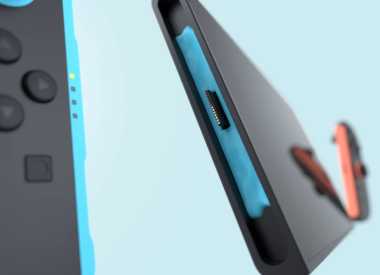While demoing multiple headphones with Sennheiser during CES 2016, the technology that was generating the most buzz (outside of its $50,000 Orpheus headphones), is the pioneering AMBEO 3D audio technology.
The 3D audio was showcased through VR headsets, a virtual reality microphone, venue modeling and in a home theater setting.
“If you think about the last four or five years at CES, it’s been about visual, 4K video, all that stuff. People are realizing your ears are so sensitive,” a spokesperson for Sennheiser, told iDigitalTimes. “When people switched over to stereo and they wouldn’t look back, that’s going to be happening very soon with immersive audio.”
When using VR the visuals usually have a 360-degree range, but much of the audio is always front facing. It’s not true reality. Your brain knows that and tell you 'this isn't real,' according to Sennheiser.
What the AMBEO 3D audio technology does is make the audio virtual as well. For example, during the VR demo a woman was playing a piano in a church. When you faced her directly the sound was equal but if you turned around or to the left or right it feels like you’re in the room and the sound adjusts as if you were there.
“You put on the headphones and you have a perfect representation of the 3D sound field of anything coming from a particular point of space,” Sebastian Chafe, Strategic Innovation Manager at Sennheiser said.
The Sennheiser 3D Audio uses built-in head tracking in the VR to ensure wherever you look while using the device the sound source stays the same. Chafe said the technology would become available to the public in the second half of 2016.
Sennheiser’s expert tonmeister Gregor Zielinsky gave a demo of the technology in a home theater setting. He demoed the difference between traditional stereo sound and 3D. The difference wasn’t subtle but crystal clear. He used examples of video recorded with Sennheiser’s 3D audio mics and technology as well as older content that have been mixed to meet the new standards. Both new and old technology had the same quality.
The 3D audio was most noticeable during a Coldplay concert video. In Stereo the crowd noise, along with the band, all came from the same speakers. When the audio was switch to AMBEO 3D audio, the crowd (just like you were at the live show) was behind you with the band’s volume present in the front.
Venue modeling is also a part of Sennheiser’s AMBEO 3D audio technology push. Using a VSD plug-in, DJs, sound engineers etc. can use the venue modeling to get the perfect sound for patrons no matter the size of the venue.
Brian Glasscock, who was demonstrating the technology at CES for Sennheiser, said it take about 10 minutes for the program to work.
“You can go to a venue, take an acoustic model in about 10 minutes,” Glasscock said. “Which will take into consideration the PA as well as the reflections and acoustics of the room. Based upon that we can create a true to life simulation of the sound of being in the center of the dance floor.”
Once a venue has been measured it can be saved and used again by other artists.
Sennheiser’s AMBEO 3D audio technology is slated for release later this year and does not have an official price point yet.

















